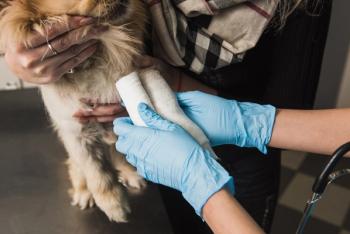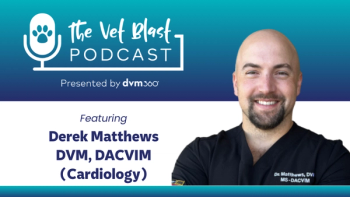
Techniciansyour surgical sidekicks
Surgery team, assemble! Its time for veterinarians to let their Super Techs reveal the heroes they were born to be.
“I think of technicians as the mitochondria of the practice,” Dr. Claude says. "They're behind the scenes doing a lot of the work for the veterinarians. For one thing, they help free up time for the practitioner. If you're a veterinarian and you're doing 90 percent of the work, you're doing way too much, in terms of day-to-day practice. A lot of the things you're doing your technician can do-specifically anesthesia, patient nursing care, patient assessment and client education."
So are you ready to train your techs to surgical greatness? Consider these three areas of skill:
1. Endotracheal tubes
Dr. Claude fields a lot of questions from concerned technicians who struggle with this skill.
“Patient positioning is extremely important during intubation,” Dr. Claude says. “You need to be able to visualize the larynx, and you can't visualize the larynx if the patient is flopping around on their side. I usually recommend having the patient on its side, especially large dogs, or in ventral recumbency, so you're looking down into the mouth.”
It's important that the patient is fully anesthetized and there's good muscle relaxation. "I'd say probably the No. 1 problem with intubation is that the patient is not well-premedicated,” Dr. Claude says. “Premedication is where we get the muscle relaxation-it's not just the induction. So make sure your patients are well-premedicated and fully induced, and then try to intubate."
Some tech(nical) tips:
> Use the laryngoscope to visualize the larynx. "Often times people give up or intubate less because they're having trouble getting the tube into the hole,” says Dr. Claude. “Use the laryngoscope. They're reusable, you just need to wipe them with alcohol-it takes seconds."
> For cats, spray the larynx with a topical anesthetic. "Cats have extremely high laryngeal sensitivity, so they have a high incidence of laryngeal closure and laryngospasm," Dr. Claude says. "So spraying them with topical anesthetic is absolutely essential. It makes it easier to intubate the cat and you decrease the chance of laryngeal trauma."
A pro-tip from Dr. Wardlaw: For cats, put a little red rubber catheter down the endotracheal tube, because the red rubber catheter will go between the arytenoids, like a stylet, and then the endotracheal tube will slide the between the arytenoids. And for endotracheal tubes, Dr. Wardlaw says your inclination might be to go smaller and smaller to get it in, but obviously for the airway it's better to go big or go home.
Another common question: How do you know it's a successful intubation?
> Visualizing the tube in the glottis, Dr. Claude says, which is easier with larger dogs compared with cats.
> Seeing condensation on the inside of the tube when the animal exhales.
> Listening on both sides of the chest for lung sounds when you squeeze the bag.
> Hearing air sounds at the end of the endotracheal tube. "This is actually how we do it with rabbits," Dr. Claude says. "You listen for little puffy noises at the end of the endotracheal tube."
> Looking for reservoir bag movement that corresponds to the breathing pattern.
> Feeling the trachea. "What I tell our students when they're learning how to intubate is grab that trachea like you're going to kill that animal. Feel that endotracheal tube go into the trachea," says Dr. Claude.
> Using capnography. "The most accurate way is capnography. This is a security blanket in my mind, knowing that we're intubating," Dr. Claude says. "For the most part you're not going to get a capnogram, or an indication of carbon dioxide coming out of exhaled air, if the patient's not intubated."
2. Managing pain (in the pet and the client's pocketbook)
"With practice, technicians can become very good at local regional techniques. Imagine that you have an anesthesia technician," Dr. Claude says. "Not only has that person anesthetized the patient and got it ready for surgery, but she's also doing a sciatic femoral nerve block, because you're going to cut a knee. So all you have to do is scrub in, do your surgery and scrub out. That patient's taken care of. Is that going to free up your time? To me, that's not only good for your professionalism, it's good for your practice."
Some examples of blocks your technicians can learn to perform: dental blocks, bracheoplexis, forepaw, lumbosacral epidurals, caudal epidurals, sciatic femoral blocks and rear paw blocks. "Pretty much any place there's a nerve, they can block using local regionals, including eyeballs," Dr. Claude says.
Technicians can help perform pain assessments, including using pain scales, grimace scales and more. Remember, your technicians want to learn more and do more, Dr. Claude says.
Surgical nursing tasks include TLC for wounds and incisions as well as fearlessly defending the patient's wellbeing. When you tackle these heroic efforts, arm yourself with balls, hoists and slings to achieve better compliance when you care for large or stubborn patients.
Technicians also perform critical nursing roles, including getting those drunk dogs up and about after surgery, grooming them, petting them and communicating with the pet owners after the surgery, Dr. Wardlaw says.
Your surgical nurses are also well-armed to ease clients' financial distress by discussing estimates and deposits. After all, they can often can easily answer most of these clients' questions and save you time in the exam room.
"Don't talk about the money at the front desk," Dr. Wardlaw says. "Have your technicians talk with pet owners in the exam room-that's when the owners are honest." When pet owners are emotionally upset, they may be more honest with technicians-for example, they might explain they can't afford to pay.
Also arm your technicians with estimates that give a 10% to 30% variance, and encourage them to explain that the price will depend on the pet's needs, such as how much pain medication the pet needs and how long it needs to be hospitalized, Dr. Wardlaw says.
3. Obese pets
Obesity is a weighty topic. Your technicians can remind clients that fighting obesity is critical for medical issues to help the pet live longer, reduce its risks of certain kinds of cancer and reduce the chances or severity of certain orthopedic conditions.
As a super-surgery tech, you can also harness your powers for good when it comes to postoperative weight loss. Take charge of check-ins and weigh-ins for progress, use follow-up calls and give clients
Along with weight loss, technicians can transform into general health care advocates at check-ins and check-outs. This builds clinic loyalty and gives the front of office team members a chance to chime in.
Hear that? There's a cat in need of a bladder expression. Time to let your technicians don their capes so they can be the technicians your clinic needs.
Newsletter
From exam room tips to practice management insights, get trusted veterinary news delivered straight to your inbox—subscribe to dvm360.






